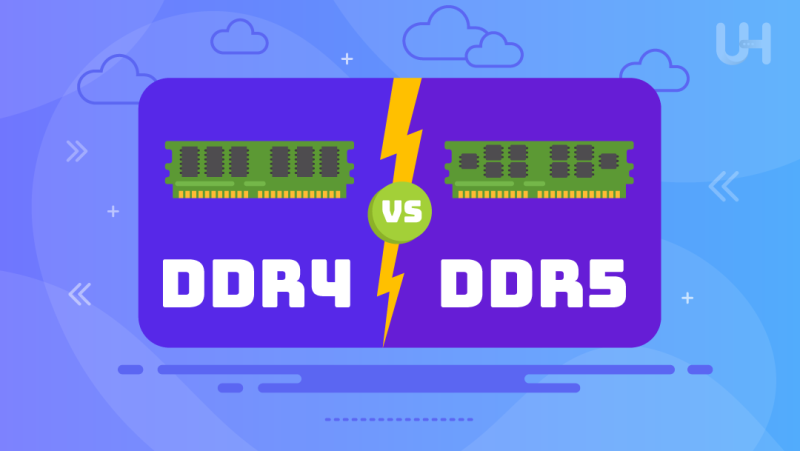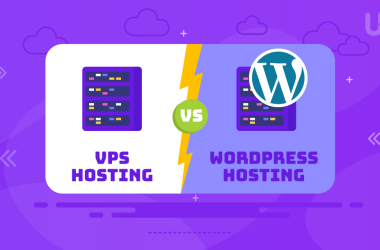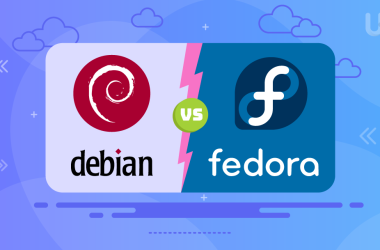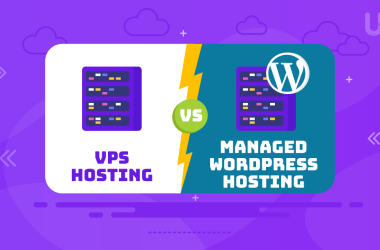Memory has been the core element in bringing performance to computers. DDR4 vs DDR5 RAM is a debate most engaged in by tech-savvy people and professionals alike. Knowing the differences makes a case for deciding which RAM type you will need for your computing purposes.
In this article, we will describe DDR4 and DDR5 RAM types, focusing on features, differences, and suitability for applications.
What is DDR?
DDR stands for Double Data Rate, an SDRAM process where data transfer rises and falls on signal clocks. This multiplies the speed and efficiency of data processing. It is a very important factor in modern computing that spans from personal computers to managed dedicated servers.
What is DDR4 RAM?
DDR4 RAM, otherwise called Double Data Rate 4 Synchronous Dynamic Random-Access Memory, is a volatile memory technology used in computing devices for storing data currently in use. Released in 2014, DDR4 RAM was the next information handler after DDR3 and brought some big improvements in terms of speed and efficiency, if not larger capacity. It is an electronic component used for fast data transfer and has myriad applications, ranging from personal computers and gaming rigs to even servers and workstations. DDR4 RAM modules are designed with modern software and applications in mind. Hence, they perfectly balance performance and power efficiency.
DDR4 RAM Features
- Speed: Runs at speeds of 1600MT/s to 3200MT/s, which is in million transfers per second, allowing higher data access and transfer rates.
- Voltage: A lower working voltage of 1.2V decreases the power consumption and generates less heat, benefiting energy efficiency and system stability.
- Capacity: More capacity modules are available with as much as 64GB per DIMM, which provides more multitasking and running large applications.
- Latency: Improved network latency, relative to DDR3, delivers quicker response times and better performance across a wide spectrum of applications.
- Compatibility: Since its release, it has worked with most motherboards and all systems in production, giving it considerable versatility for upgrades and new builds.
What is DDR5 RAM?
The Double Data Rate 5 Synchronous Dynamic Random-Access Memory is the 2020 generation of DRAM. It has been designed to provide quite a number of improvements in speed, efficiency, and capacity compared to DDR4. DDR5 RAM has been designed to meet modern computing applications’ ever-growing requirements—applications such as high-performance gaming with a gaming server, advanced data processing, and artificial intelligence. Additional features make DDR5 represent a huge performance uplift and are designed to be future-proof.
DDR5 RAM Features
- Speed: Runs at 4800 MT/s and above speeds, with the addition of far higher speeds as this technology matures. This will help faster data processing for better system performance.
- Voltage: An even lower operation voltage of 1.1V further reduces power consumption and produces less heat, making it even more energy-efficient than its predecessor.
- Capacity: It provides higher-capacity modules of up to 128 GB per DIMM, which doubles DDR4’s maximum capacity. This makes it ideal for use cases with large memory demands, such as data centers and high-end workstations.
- Latency: Improved latency features generally lead to quicker data access and processing times, increasing system responsiveness.
- Bandwidth: Unlimited bandwidth helps double data rates when dealing with vast data and high-performance applications.
- Efficiency: Enhanced power consumption and heat dissipation efficiency provide added advantages to the memory modules’ functioning for optimal performance and lifetime.
Upgrade Your Performance with High RAM VPS!
Ready to experience the ultimate boost in performance for your applications? DDR5 can elevate your performance over DDR4! Upgrade to a High RAM VPS from UltaHost and experience the superior speed, efficiency, and capacity of DDR5 RAM.
Differences Between DDR5 vs DDR4
Knowing these differences between DDR4 vs DDR5 RAM helps to understand which type of memory is best for the system. These differences cut across significant areas such as speed, voltage, capacity, latency, and overall efficiency.
Speed and Performance
A bigger part of the differences between DDR4 and DDR5 RAM has to do with speed. DDR5 starts at 4800 MT/s compared to DDR4, starting from 1600 MT/s. With an increased pace, DDR5 RAM will better manage data processing faster and perform apps that require high memory bandwidth, such as gaming and video editing.
Voltage and Power Consumption
DDR5 RAM runs on a voltage of 1.1V. At the same time, the DDR4 variant uses 1.2V, so the voltage drop correspondingly decreases power consumption, making DDR5 more energy-efficient. Since less power is used, less heat is generated, which again contributes to longer life and higher reliability for memory modules.
Capacity and Scalability
Other major differences include memory module capacity and scalability. DDR5 RAM supports larger DIMM capacities, reaching as high as 128GB per module. Normally, DDR4 RAM would come in at up to 64GB per DIMM. This makes DDR5 more suitable for large memory applications like servers and data centers.
Latency and Efficiency
While DDR4 and DDR5 are still superior to their previous versions, DDR5 enjoys more latency features. More expanded latency means that DDR5 can work with data faster and do so efficiently to offer high performance when working on memory-intensive tasks. Moreover, its architecture is designed to bear a heavier workload more efficiently, rendering it very future-proof for the requirements of highly advanced computing.
Compatibility and Availability
DDR4 RAM has been in place for many years, and it’s backed by a long history of peripheral compatibility across an enormously wide range of motherboards and systems. In contrast, DDR5 RAM is rather new, and perhaps newer boards are needed to support this newer standard. This difference in compatibility might complicate the decision to upgrade to DDR5 or stay with DDR4, depending on your current setup.
Cost
Generally, DDR5 RAM is more expensive than DDR4 RAM. This seems obvious, considering it is new and has so much to give. As with the latest technology, though, the price of DDR5 can surely drop when adoption increases and production becomes cheaper. But for now, DDR4 still trumps its successor on price for budget-minded buyers.
DDR4 vs DDR5 RAM: Which One to Choose?

There are many factors to consider when choosing between DDR4 vs DDR5 RAM. Suppose you want to build a new system or upgrade an existing one to peak performance, particularly for high-end gaming, professional workstations, or data-intensive applications. In that case, DDR5 RAM is undoubtedly the best option. Pairing DDR5 RAM with NVMe servers can further enhance performance, providing blazing-fast data access and improved system responsiveness.
However, if you are strapped for cash or have an older system that does not support DDR5, DDR4 RAM is still an excellent choice. It will return great performance and reliability on most everyday computing tasks; it’s also widely available at lower costs.
Ultimately, the final decision between DDR4 vs DDR5 RAM now rests on your specific requirements, budget, and compatibility with other existing hardware. DDR4 is still sufficient for most users’ basic needs, while DDR5 offers high-end technology for people to upgrade their systems in the future.
Conclusion
While controversy surrounds DDR4 vs DDR5 RAM, both have advantages and are suited to different use cases. DDR4 RAM remains a very reliable and cost-effective solution for most users, while DDR5 RAM enables superior performance and efficiency for the heavy computing requirements of other users. Knowing the differences between these two types of RAM will let you make an informed decision while upgrading or building your next computer system. Be it DDR4 or DDR5, the results are sure to improve your computing experience exponentially.
UltaHost’s Instant Server Hosting with cutting-edge DDR5 RAM is the perfect choice for those seeking immediate and powerful performance enhancements. Experience the speed and efficiency of next-gen memory technology.
FAQ
What are the key differences between DDR4 and DDR5 RAM?
DDR5 offers higher speeds, lower voltage, greater capacity, improved latency, and higher bandwidth than DDR4.
Is DDR5 RAM compatible with DDR4 motherboards?
No, DDR5 RAM is not compatible with DDR4 motherboards. DDR5 requires motherboards that support the newer standard, so you must upgrade your motherboard to use DDR5 RAM.
Can I mix DDR4 and DDR5 RAM in the same system?
No, you cannot mix DDR4 and DDR5 RAM in the same system. They have different physical configurations and electrical requirements, and motherboards are designed to support only one type of RAM.
Which is better for gaming, DDR4 or DDR5 RAM?
DDR5 is generally better due to higher speeds and efficiency, but DDR4 is still viable for most games.
Will upgrading from DDR4 to DDR5 RAM improve my computer’s performance?
Yes, especially for tasks requiring high memory bandwidth, though other components also affect overall performance.








